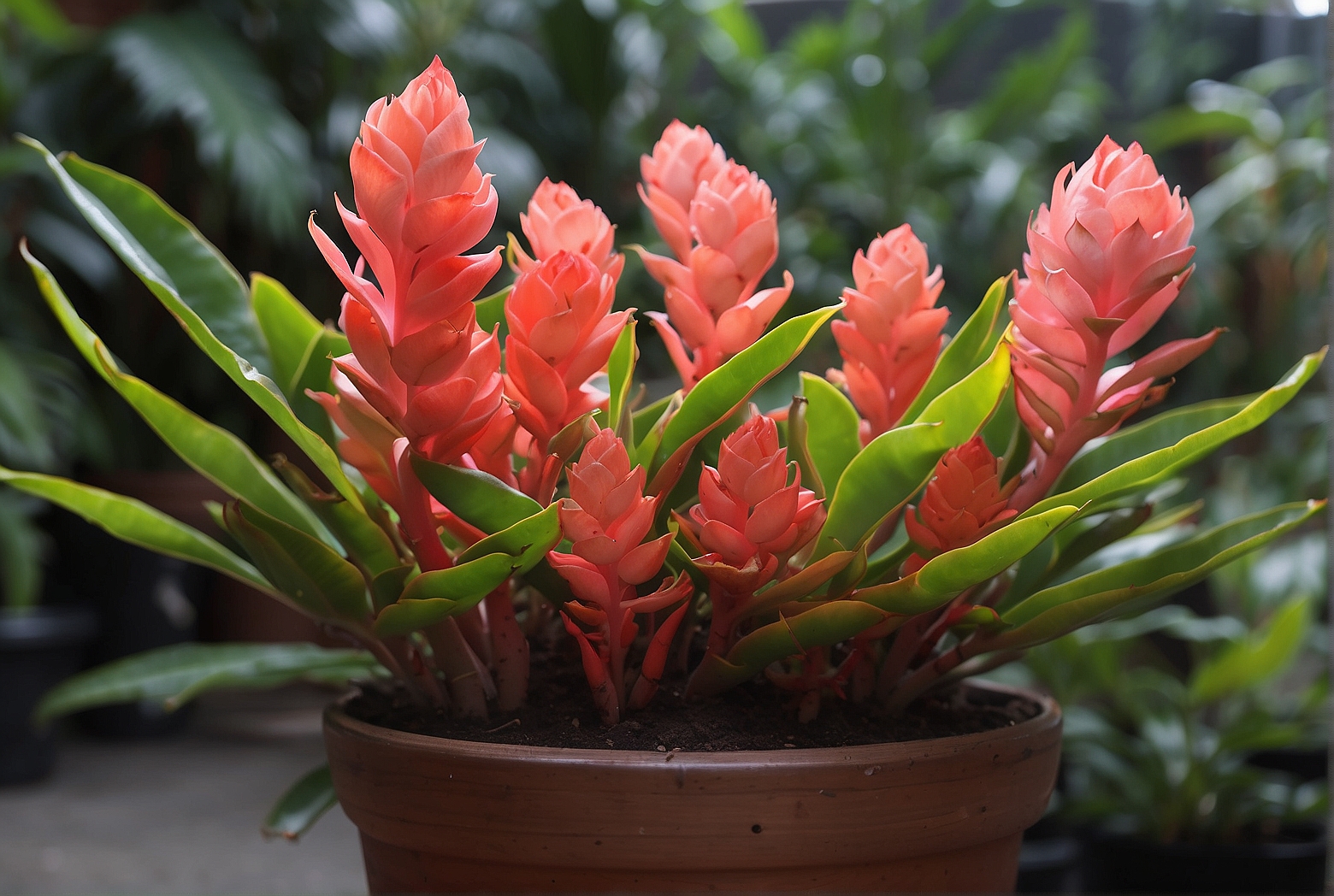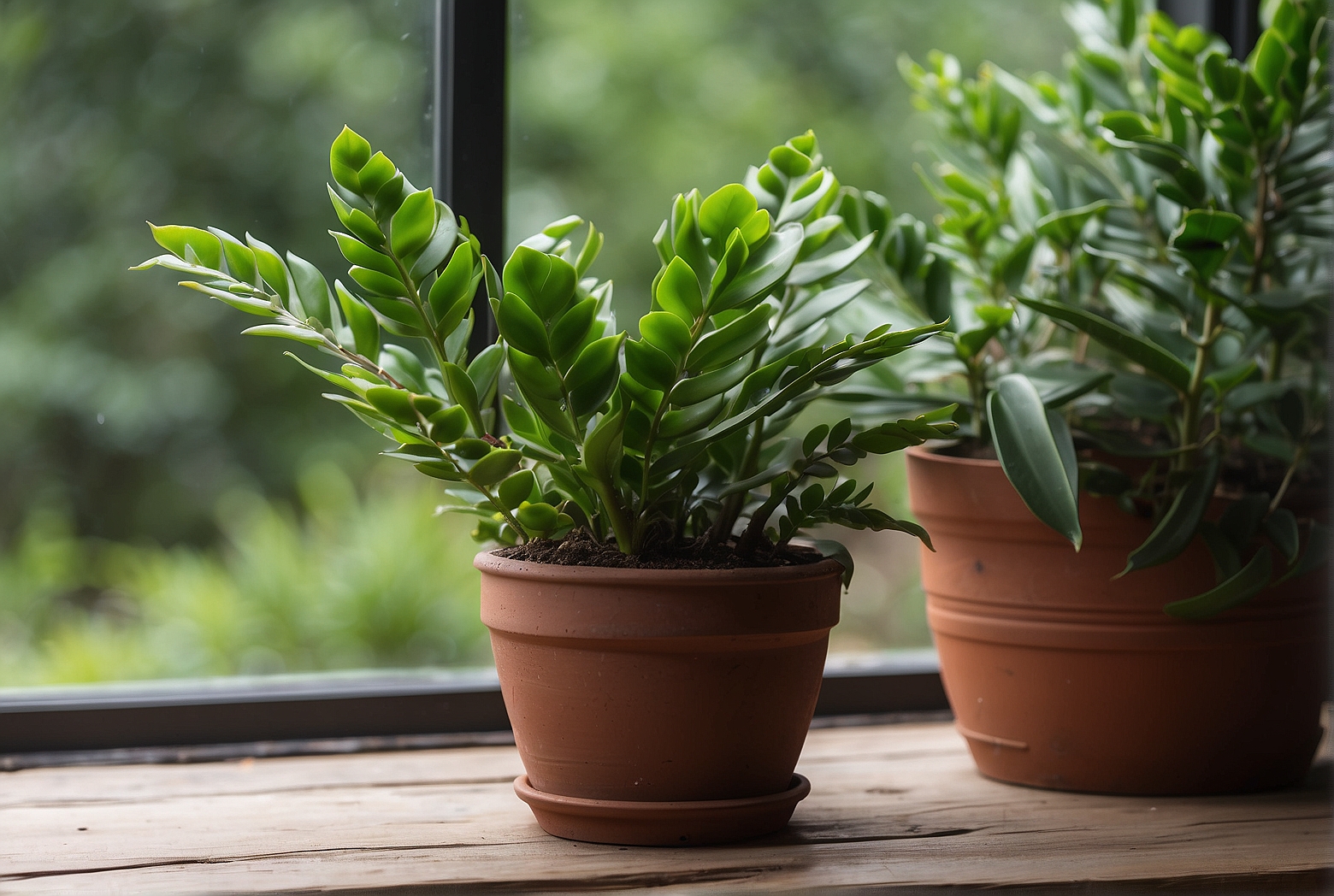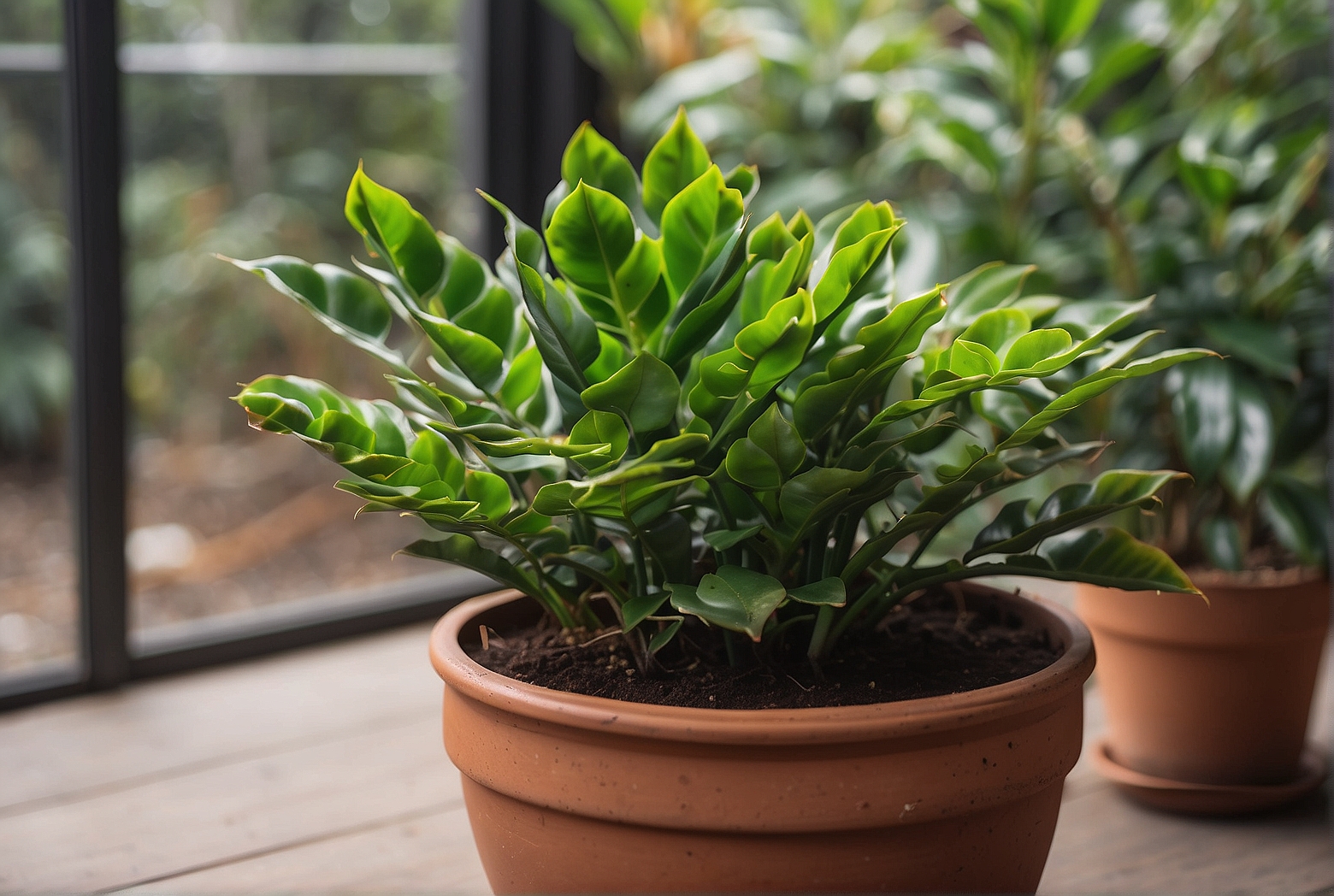Last Updated on April 3, 2024 by Tony Manhart
Did you know that the ZZ plant, also known as Zamioculcas zamiifolia, is a popular indoor plant that requires very little care? It’s one of those plants that can thrive in low light conditions and can withstand periods of neglect. But have you ever wondered if this resilient plant actually blooms? In this article, we’ll explore whether the ZZ plant is capable of producing flowers and reveal some fascinating insights about its blooming behavior. So, if you’re curious about whether your ZZ plant will ever grace you with its blossoms, keep reading to find out!
Introduction
If you’re a plant lover, you may have come across the ZZ plant at some point. It’s a beautiful and low-maintenance houseplant that adds a touch of greenery to any space. But have you ever wondered if the ZZ plant blooms? In this comprehensive article, we will explore the fascinating world of the ZZ plant, from its life cycle to its flower formation, as well as common misconceptions about its blooming. Whether you’re a seasoned plant enthusiast or a beginner looking to add some greenery to your home, this article will provide you with all the information you need to know about the ZZ plant.
Overview of ZZ Plant
Description
The ZZ plant, also known as Zamioculcas zamiifolia, is a popular choice for indoor plants due to its unique appearance and ability to thrive in low-light conditions. It features glossy, dark green leaves that grow in an upward, waxy manner, giving it a striking and tropical look. The ZZ plant is known for its ability to purify the air, making it an excellent choice for those looking to improve the air quality in their homes.
Origin
The ZZ plant is native to Eastern Africa, specifically Zanzibar, Tanzania, and Kenya. It was first discovered in the late 19th century and was later introduced to Europe and other parts of the world as a houseplant. Its ability to adapt and survive in low-light conditions has contributed to its popularity as an indoor plant.

Popularity
The ZZ plant has gained immense popularity among houseplant enthusiasts for several reasons. Its unique and attractive appearance, low maintenance requirements, and ability to survive in low-light conditions make it an ideal choice for both beginners and experienced plant lovers. Additionally, the ZZ plant is known for its ability to tolerate neglect, making it a resilient and forgiving plant for those who may not have a green thumb.
Life Cycle of ZZ Plant
Germination
The life cycle of the ZZ plant begins with germination. ZZ plant seeds are not commonly available, and therefore, most ZZ plants are propagated through leaf cuttings or division. Leaf cuttings involve separating a leaf from the main plant and allowing it to root in water or moist soil. Once the leaf develops roots, it can be planted in a well-draining potting mix.
Growth
After successful propagation, the ZZ plant enters a period of growth. During this phase, it focuses on developing its foliage and root system. The plant will continue to produce new stems and leaves, gradually increasing in size and becoming more robust. With proper care and favorable conditions, the ZZ plant can grow up to two to three feet in height.
Reproduction
While the ZZ plant is primarily propagated through leaf cuttings, it is also capable of reproducing through rhizome division. Rhizomes are underground stems that store nutrients and can give rise to new plants. When a ZZ plant becomes mature and develops multiple rhizomes, it can be divided into separate plants, each with its own rhizome and root system. This method of reproduction allows the ZZ plant to multiply and spread.

Flower Formation in ZZ Plants
Flower Anatomy
The ZZ plant is known for its glossy and attractive foliage, but its flowers are relatively rare and inconspicuous. The flowers of the ZZ plant are small, yellowish-brown in color, and grow on a spadix, which is a spike-like structure surrounded by a modified leaf called a spathe. While the flowers may not be as showy as those of other plants, they still contribute to the overall beauty of the ZZ plant.
Triggers for Flowering
Flower formation in ZZ plants is triggered by specific environmental cues. While the exact triggers may vary, some common factors that induce flowering include exposure to bright, indirect light, changes in temperature, and infrequent watering. These triggers mimic the natural conditions of the plant’s native habitat and signal it to enter its reproductive phase.
Factors Affecting Flowering
Several factors can affect the ZZ plant’s ability to produce flowers. One of the primary factors is the age of the plant. Younger ZZ plants are less likely to flower compared to more mature specimens. Additionally, environmental factors such as insufficient light, overwatering, and inconsistent temperature can inhibit flower formation. Providing the ZZ plant with optimal growing conditions can increase the chances of blooming.
Common Misconceptions about ZZ Plant Blooming
Confusion with Other Plants
One common misconception about the ZZ plant is that it does not bloom at all. This confusion may arise because the ZZ plant’s flowers are relatively rare and not as showy as those of other flowering plants. However, with proper care and favorable conditions, the ZZ plant can indeed produce flowers, albeit infrequently. It is important to have realistic expectations regarding the ZZ plant’s blooming habits.
Inadequate Care
Another misconception surrounding the ZZ plant’s blooming is that inadequate care is the primary reason for the lack of flowers. While it is true that providing the ZZ plant with proper care and favorable conditions can increase its chances of blooming, it is important to note that blooming is not guaranteed. The ZZ plant’s primary goal is to grow foliage, and flowering is a secondary characteristic. Patience and consistency in care are key when it comes to encouraging blooming in the ZZ plant.
Rare Cases of ZZ Plant Blooming
Confirmation of Blooming
While the ZZ plant is not known for its prolific blooming, there have been documented cases of ZZ plants producing flowers. When a ZZ plant blooms, it is an exciting and rare event for plant enthusiasts. The flowers may last for several weeks before fading away. It is important to enjoy and appreciate the flowers while they are present, as it may be quite some time before the plant blooms again.
Factors Influencing Blooming
Several factors can influence the blooming of ZZ plants. As mentioned earlier, providing the plant with the right environmental triggers, such as bright, indirect light and changes in temperature, can increase its chances of blooming. Additionally, ensuring that the plant is mature and well-established before expecting flowers can also play a role in encouraging blooming. It is essential to create a suitable environment that mimics the plant’s natural habitat to promote flower formation.
Other ZZ Plant Blooming Varieties
Zamioculcas zamiifolia ‘Raven’
One popular variety of the ZZ plant is the Zamioculcas zamiifolia ‘Raven.’ This cultivar features dark purple or black leaves, adding a touch of drama to any space. While ‘Raven’ is primarily grown for its foliage, it is not known for producing flowers. However, its unique coloration makes it a sought-after variety among plant enthusiasts.
Zamioculcas zamiifolia ‘Zenzi’
Another variety of the ZZ plant is the Zamioculcas zamiifolia ‘Zenzi.’ This cultivar is characterized by its dwarf size and compact growth habit. ‘Zenzi’ is known for its smaller and more delicate leaves, giving it a more refined appearance compared to the standard ZZ plant. While ‘Zenzi’ is not known for its blooming characteristics, its compact size makes it a popular choice for small spaces.
Caring for a Non-Blooming ZZ Plant
If your ZZ plant is not blooming, there are several factors to consider when it comes to its care.
Light Requirements
ZZ plants thrive in bright, indirect light. While they can tolerate low-light conditions, insufficient light may inhibit flower formation. Place your ZZ plant near a north or east-facing window where it can receive bright, filtered light throughout the day. Avoid placing it in direct sunlight as this can scorch its leaves.
Watering Frequency
The ZZ plant is known for its ability to withstand drought. It is essential to allow the soil to dry out partially between waterings to prevent overwatering. Water your ZZ plant thoroughly when the top inch of soil feels dry to the touch. Avoid letting the plant sit in water, as this can lead to root rot.
Temperature and Humidity
The ZZ plant thrives in average room temperatures ranging from 60-75°F (15-24°C). It can tolerate slightly cooler temperatures as well. Avoid exposing the plant to extreme temperature fluctuations or drafts, as this can stress the plant and inhibit flower formation. The ZZ plant can adapt to a wide range of humidity levels, making it suitable for most indoor environments.
Soil Conditions
The ZZ plant prefers well-draining soil that retains some moisture while allowing excess water to escape. A mix of peat moss, perlite, and potting soil can create a suitable growing medium for the plant. Ensure that the pot has drainage holes to prevent waterlogging.
Fertilization
While the ZZ plant is a slow-growing plant, it can benefit from regular fertilization during the growing season. Use a balanced, water-soluble fertilizer diluted to half strength, and apply it every two to three months. Avoid overfertilizing, as this can lead to salt buildup in the soil.
Pruning
Pruning is not necessary for the ZZ plant unless you want to control its size or shape. However, removing any yellowed or damaged leaves can improve the plant’s overall appearance. Use clean, sharp scissors or pruning shears to make clean cuts and prevent any damage to the plant.
Pest and Disease Control
The ZZ plant is relatively resistant to pests and diseases. However, it can occasionally attract mealybugs or spider mites. Regularly inspect your ZZ plant for any signs of pests and use natural or chemical remedies, if necessary, to control the infestation. Avoid overwatering, as this can lead to root rot and fungal diseases.
Alternative Blooming Indoor Plants
If you’re looking for indoor plants that are known for their blooming characteristics, here are a few alternatives to consider:
Peace Lily (Spathiphyllum)
The Peace Lily is a popular choice for indoor plants due to its elegant white flowers. It thrives in medium to bright, indirect light and requires consistently moist soil. The Peace Lily blooms throughout the year and is known for its excellent air-purifying properties.
African Violet (Saintpaulia)
African Violets are beloved for their vibrant and delicate flowers. They prefer bright, indirect light and well-draining soil. African Violets require careful watering to prevent waterlogging and are a great choice for adding a pop of color to any indoor space.
Bromeliads (Bromeliaceae)
Bromeliads are a diverse group of plants known for their showy, long-lasting flowers. They come in various colors and sizes, making them a versatile choice for indoor gardens. Bromeliads prefer bright, indirect light and thrive in environments with high humidity.
Conclusion
While the ZZ plant may not be known for its prolific blooming, it still offers plenty of beauty and benefits through its attractive foliage and air-purifying properties. Understanding the ZZ plant’s life cycle, flower formation, and care requirements will help you appreciate and care for this unique plant. Remember to be patient, provide optimal growing conditions, and enjoy the process of nurturing your ZZ plant. And if you’re looking for blooming indoor plants, consider the alternatives mentioned above to add a splash of color and joy to your indoor space. Happy gardening!
Tony Manhart is a passionate gardener who has been tending to gardens for over 20 years. He takes pride in creating beautiful outdoor spaces with plants, trees, and shrubs that can thrive in any environment. He loves to share his knowledge with others and has taught classes on gardening basics and advanced techniques. He is committed to sustainability, using natural and organic methods to create and maintain gardens. He also works with local organizations to create green spaces for communities. When he’s not gardening, Tony enjoys hiking, reading, and spending time with his family.


